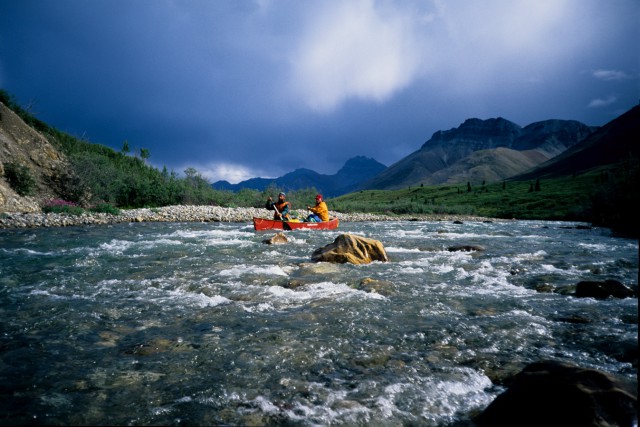
Yukon First Nations and Yukon-based environmental organizations are taking legal action to secure protections for
the Peel River Watershed, an area seven times the size of Yellowstone National Park, against
the expansion of new mineral staking and oil and gas development.
“Seventy-five percent of the Yukon is open to mineral staking,” Canadian Parks and Wilderness Society Yukon Chapter Executive Director Gill Cracknell said in a press release. “To compensate for the fragmentation and disturbance resulting from industrial development on the rest of the landscape, we need to set aside large areas for wildlife, cultural uses, tourism and climate change adaptation. The Peel region is one of the last remaining, ecologically-intact wilderness watersheds left in North America. There needs to be real protection, not postage stamp areas riddled with roads and mines.”
The Yukon Government has adopted their
own plan, which only observes the need to protect 30 percent of the watershed
from new mineral staking, while the Peel Watershed Planning Commission’s
proposal calls for the permanent protection of 55 percent of the watershed.
The Peel Watershed Planning Commission researched
and consulted scientists for seven years to reinforce their reasoning for the
area they requested remain protected, but the Yukon Government did not adopt
the Peel Watershed Planning Commission’s proposal, which was supported by
affected First Nations. That’s an obstruction of the First Nations’ rights based on the Umbrella Final Agreement signed by the Government of Canada Government of Yukon and Yukon First Nations in 1993,
which provided an outline of land uses and secured Yukon First Nation interest rights
for traditional territories, according
to Thomas Berger, the plaintiff’s attorney.
According to the Scientific
and Professional Findings Supporting Protection of the Peel Watershed, the
wide range of elevations and diverse drainage patterns in the Peel River
Watershed provides the greatest diversity of plant communities and ecosystems.
This diverse land is responsible for harboring rare plants and providing a
sanctuary for increasingly endangered larger mammals, such as wolves, grizzly bears,
lynx, and wolverine, which require large wilderness areas to survive.
“These large watersheds are the fully functioning
ecosystems with the greatest likelihood of accommodating climate change and
maintaining ecological integrity over the long term,” Jim Pojar, an expert on
northern ecology, stated in the Conservation Plan for the Peel Watershed.
Read the complete press release from the First Nations and environmental organizations here.














